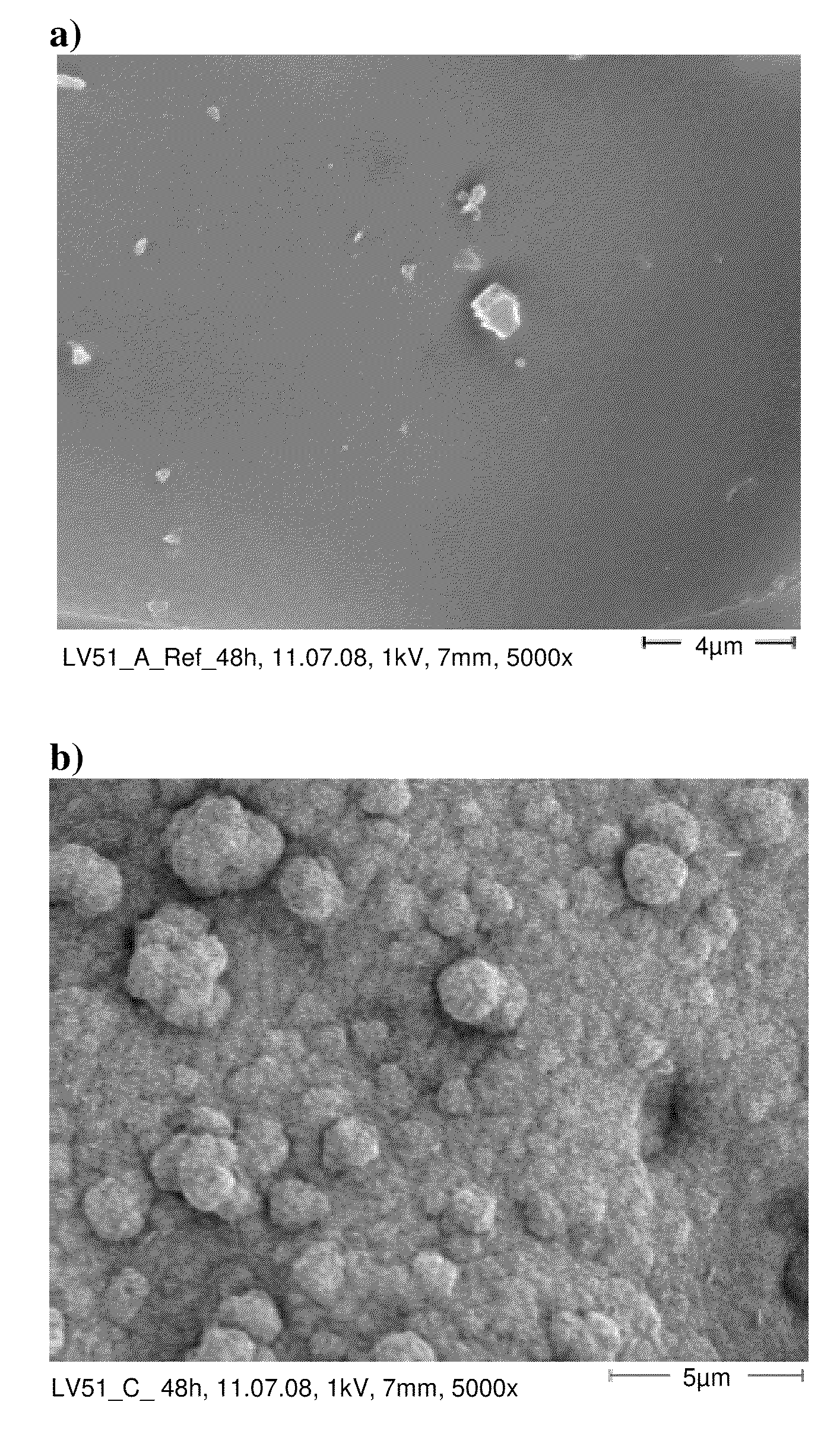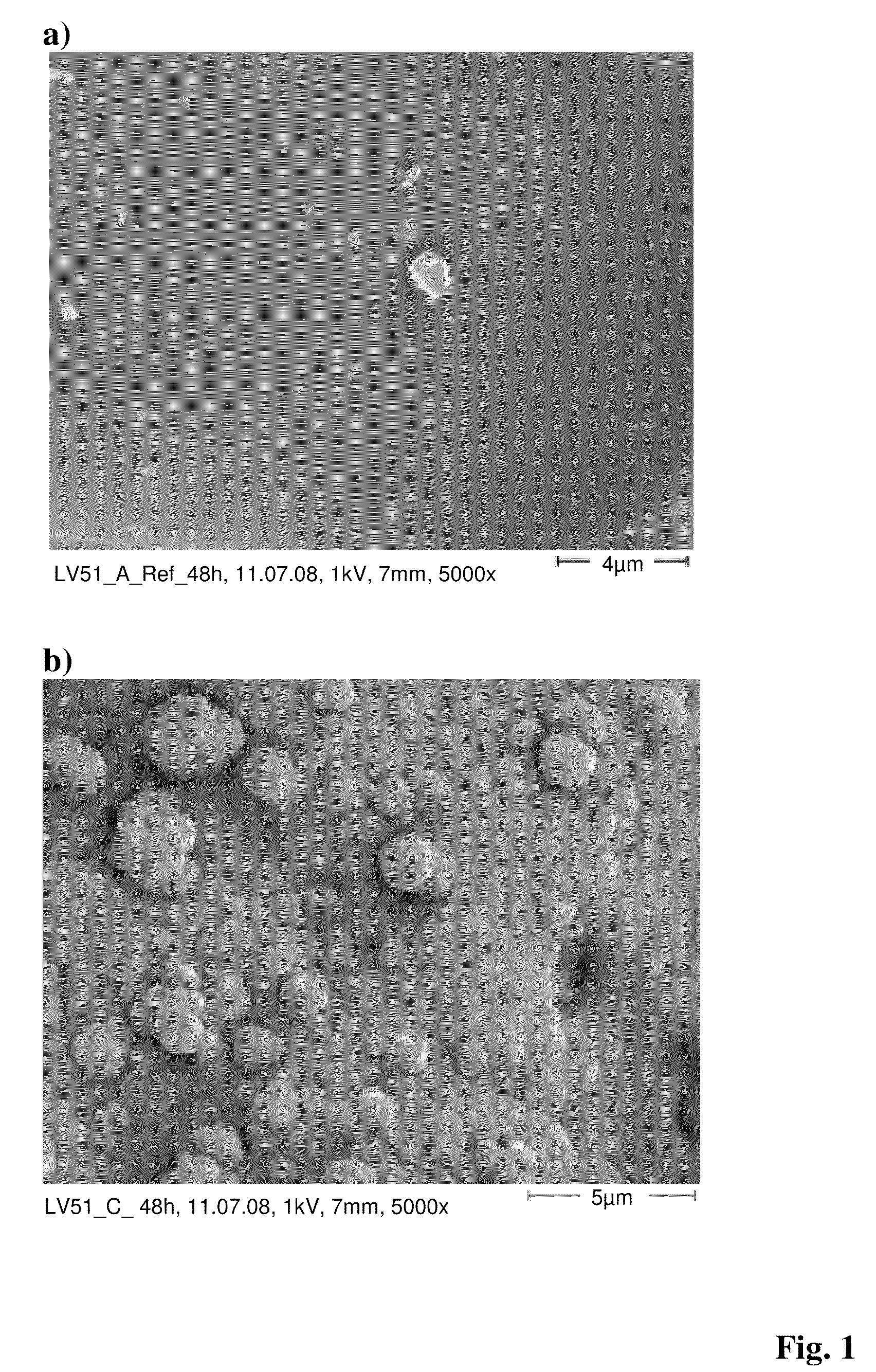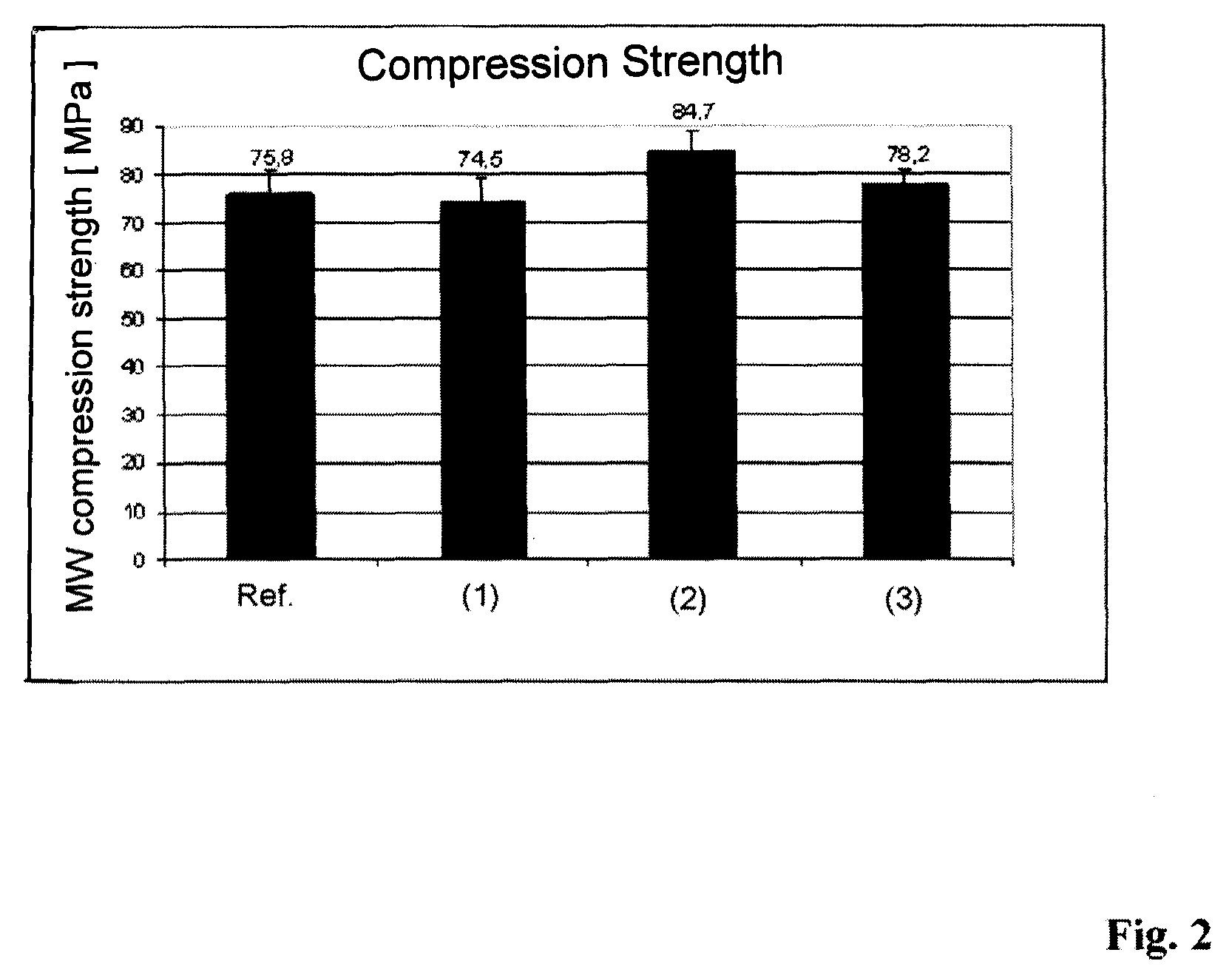Bioactive bone cement and method for its production
- Summary
- Abstract
- Description
- Claims
- Application Information
AI Technical Summary
Benefits of technology
Problems solved by technology
Method used
Image
Examples
example 1
Preparation of Anionic Copolymer Nanoparticles with Core / Shell Configuration and Methacrylic Acid (MAA) as Anionic Co-Monomer
[0082]By a method of emulsion polymerization anionic copolymer nanoparticles are produced that contain MAA as anionic co-monomer.
[0083]For this purpose, 0.5 g potassium peroxide disulfate and 10 g of an emulsifying agent solution (0.5 g sodium lauryl sulfate in 70 g of water) in 950 grams of water are placed into a stirred 2 l four-neck flask. Subsequently, at 80° C. under argon 60 g emulsifying agent solution were metered in. Parallel to this, the following monomers were metered in: first 226 g MMA; subsequently, a monomer mixture of 202.5 g MMA and 22.5 g methacrylic acid (MAA). The total time of the metering action was 3 hours. In this way, a stable dispersion with a solids content of 30% was obtained.
[0084]1 kg of the thus produced dispersion was frozen at −20° C., then thawed with hot water, filtered off by suction, washed and dried. 287 g of a fine powde...
example 2
Preparation of Anionic Copolymer Nanoparticles with Core / Shell Configuration with Hydroxyethyl Methacrylate Phosphate (HEMA-P) as Anionic Co-Monomer
[0085]In a method of emulsion polymerization anionic copolymer nanoparticles were produced that contain HEMA-P as anionic co-monomer.
[0086]For this purpose, 0.13 g of sodium lauryl sulfate and 1.0 g potassium peroxide sulfate in 975 g water were placed into an apparatus according to Example 1 and heated to 80° C.
[0087]To this, first an emulsion of 233 g MMA, 0.7 g sodium lauryl sulfate, and 182 g water was metered in. Directly afterwards, a further emulsion, comprised of 11.4 g HEMA-P, 14.7 g MMA, 0.5 g sodium lauryl sulfate and 199 g water, was metered in. After metering in the emulsions, the mixture was stirred further at 80° C. for 1 hour. Subsequently, cooling to room temperature and filtration were carried out.
[0088]A stable dispersion with a solids content of 25% was obtained. By freezing, thawing and washing in analogy to the Exam...
example 3
Preparation and Testing of Bioactivity and Compression Strength of Bone Cements According to the Invention with Anionic Copolymer Nanoparticles with HEMA-P as Anionic Co-Monomer
[0089]A bone cement according to the invention has the following composition:[0090]powder component: polymer powder (PMMA particles, Palacos R of Heraeus Medical), anionic copolymer nanoparticles with HEMA-P as anionic co-monomer (in analogy to Example 2), CaCl2, Na2CO3;[0091]reactive monomer liquid: MMA (Palacos R, with co-initiator and inhibitor).
[0092]For producing the bone cement anionic copolymer nanoparticles of the Example 2 were mixed into a commercially available bone cement powder (Palacos R of Heraeus Medical). Before the mixing process the nanoparticles were ground in order to break up agglomerates. Alternatively, a nanoparticle suspension can be mixed with the bone cement powder and subsequently dried so that nano-particulate coatings of the anionic copolymer nanoparticles on the bone cement powd...
PUM
| Property | Measurement | Unit |
|---|---|---|
| Fraction | aaaaa | aaaaa |
| Fraction | aaaaa | aaaaa |
| Fraction | aaaaa | aaaaa |
Abstract
Description
Claims
Application Information
 Login to View More
Login to View More - R&D Engineer
- R&D Manager
- IP Professional
- Industry Leading Data Capabilities
- Powerful AI technology
- Patent DNA Extraction
Browse by: Latest US Patents, China's latest patents, Technical Efficacy Thesaurus, Application Domain, Technology Topic, Popular Technical Reports.
© 2024 PatSnap. All rights reserved.Legal|Privacy policy|Modern Slavery Act Transparency Statement|Sitemap|About US| Contact US: help@patsnap.com










